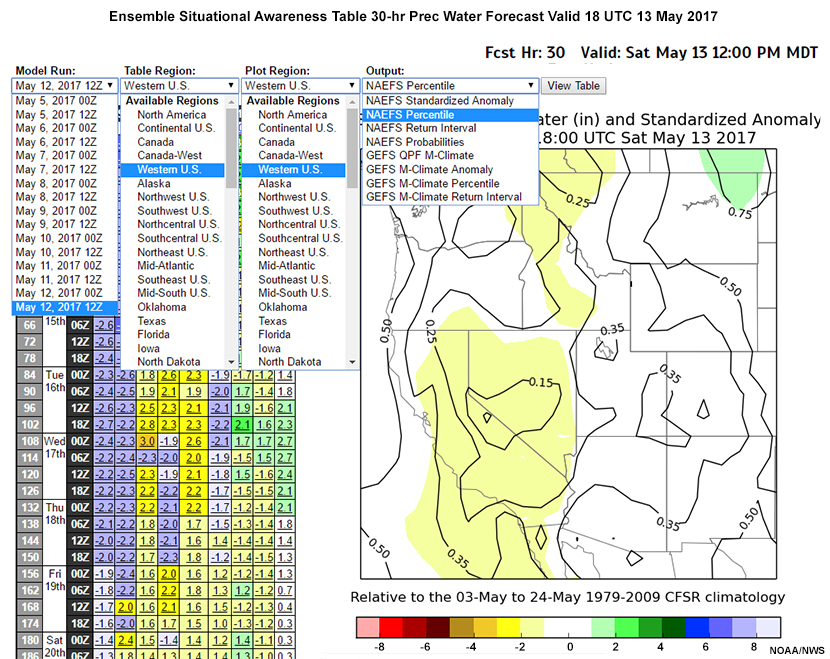Introduction
Operational weather forecasters often see single valued (deterministic) numerical weather prediction (NWP) forecasts go awry. This issue results from the approximations used in NWP models and the sensitive dependence on initial conditions (Lorenz, 1963).
Given these realities, forecast centers have developed Ensemble Forecast Systems (EFSs). These are probabilistic NWP systems run with multiple forecasts using slightly different initial conditions. EFS forecasts are typically generated from one model although some systems use multiple models. Because EFSs estimate probabilities for a range of forecast outcomes, they are used for situational awareness of potential high impact events, and to anticipate the need for impact-based decision support.
To provide useable information from EFS data, ensemble products or tools are created to summarize the data. The National Weather Service (NWS) Western Region Science and Technology Integration Division (WR-STID) maintains an Ensemble Situational Awareness Table (ESAT), which is used to assess forecast “extremeness” out to 10 days.
The ESAT uses data from the NCEP Global EFS (GEFS) and the North American EFS (NAEFS). The latter combines the GEFS and Canadian EFS (CEFS) into a multi-model global ensemble. For more information on Canada's Global Ensemble Prediction System and NCEP GEFS, see COMET’s Operational Models Encyclopedia.
The graphic below shows a screenshot of the ESAT. Products and valid times are selected from the table on the left, and the corresponding data displayed on the right.

This lesson will use the ESAT and its products to present some ensemble tools, and the statistical methods used to develop them. We will examine data from a potential California atmospheric river event and a Northeast U.S. synoptic-scale storm system. Before continuing to the lesson, we strongly recommend that you review the basics of ensemble prediction by taking the lesson “Introduction to EPS Theory”.
After completing the lesson, you should be able to:
- Describe how ensemble tools support the assessment of extreme weather event forecasts
- Describe the ESAT, including data sources, forecast elements, and pressure levels
- Describe the ESAT products and the statistical methods needed to make effective use of ensemble tools, including:
- Probability in the context of using ensembles in the forecast process
- Reanalysis and R-Climate, reforecasting and M-Climate, and their use in predicting extreme events
- Verification of probabilistic forecast products